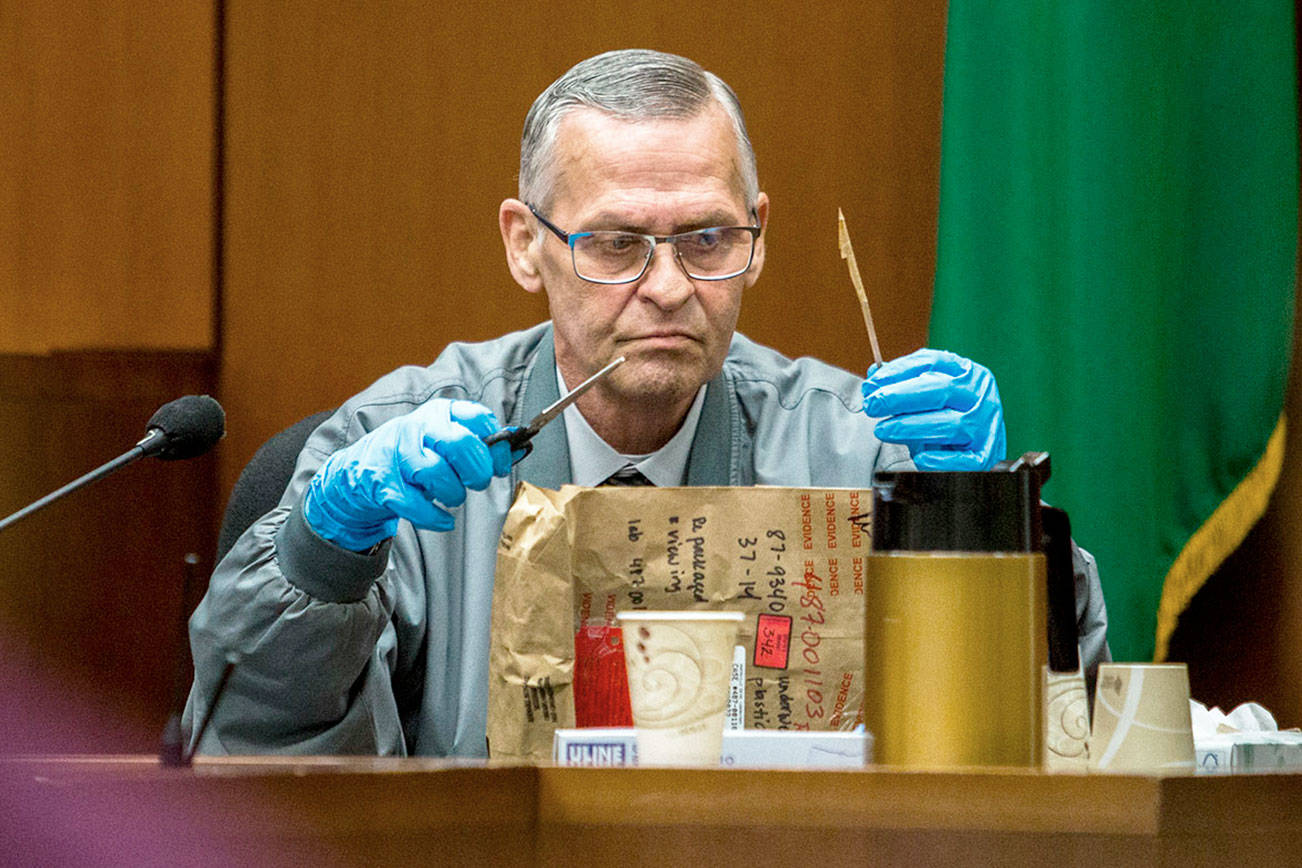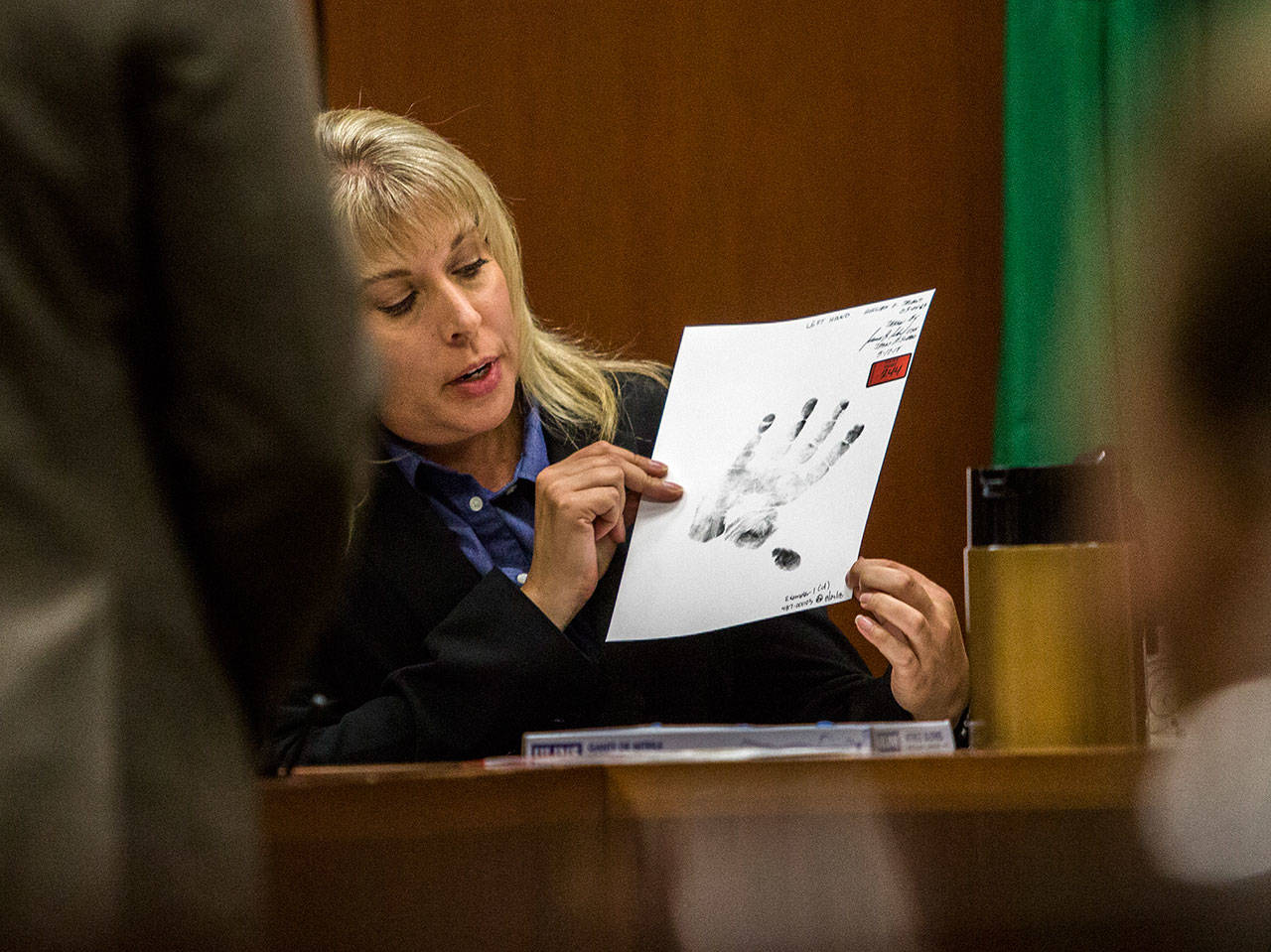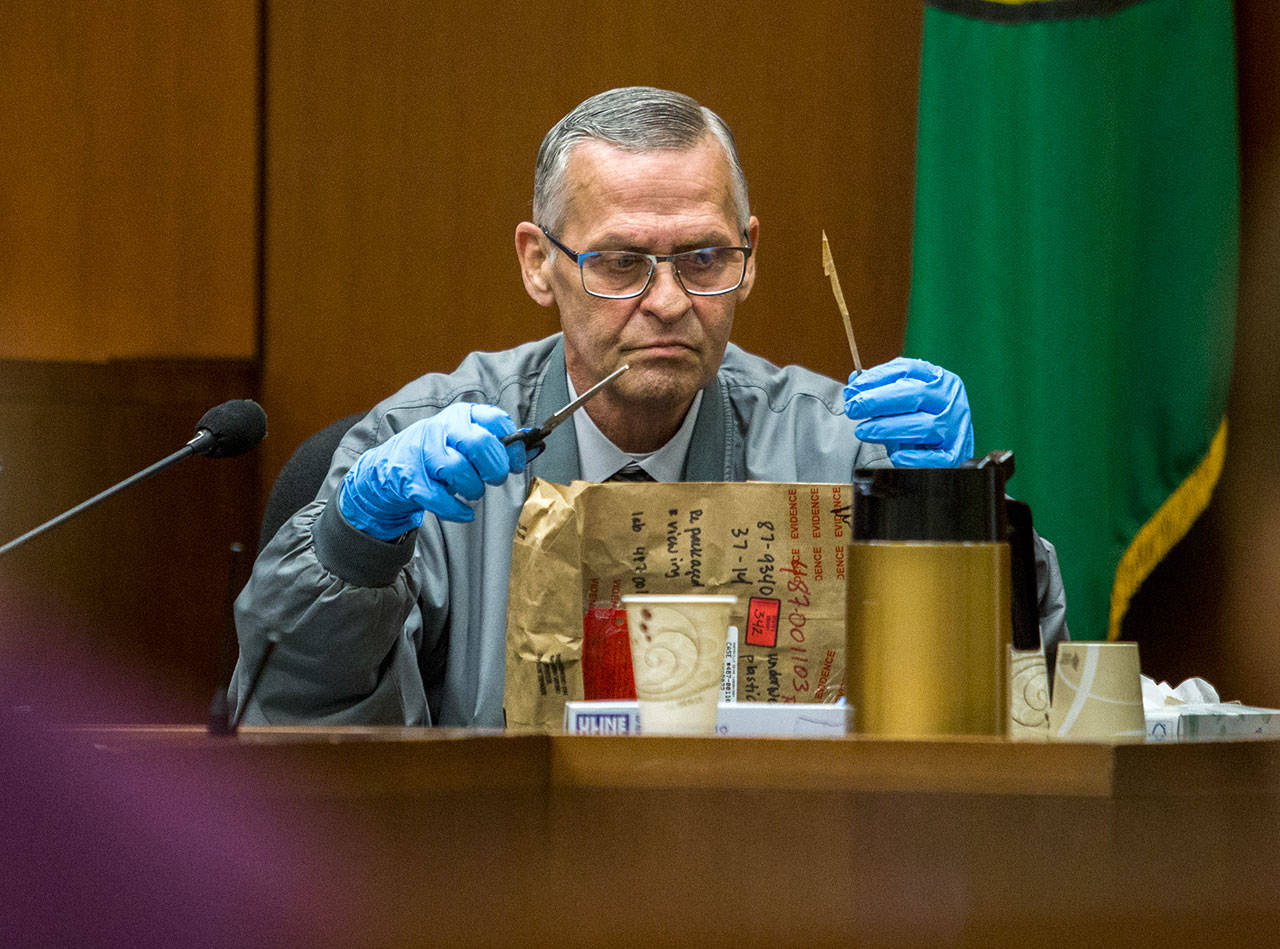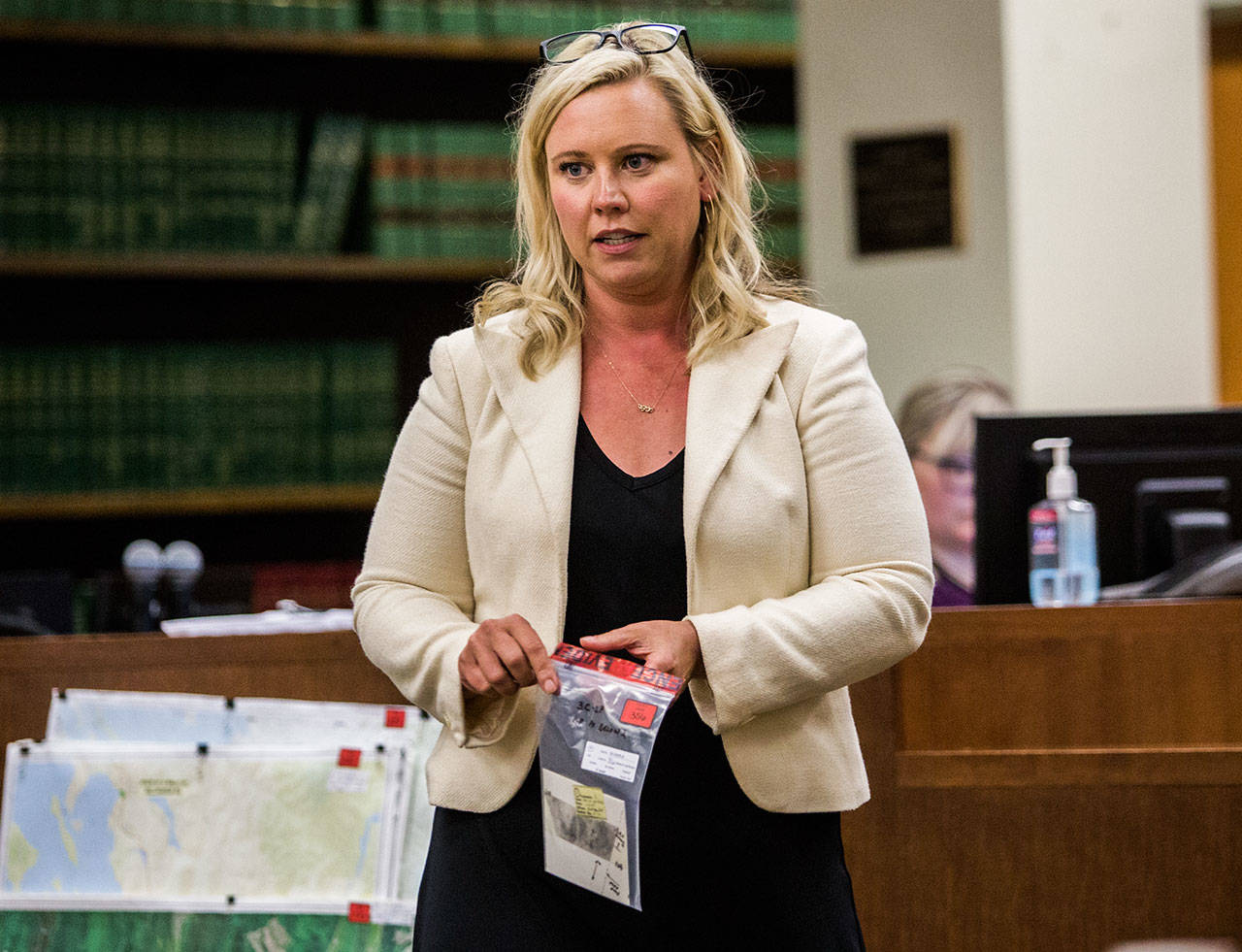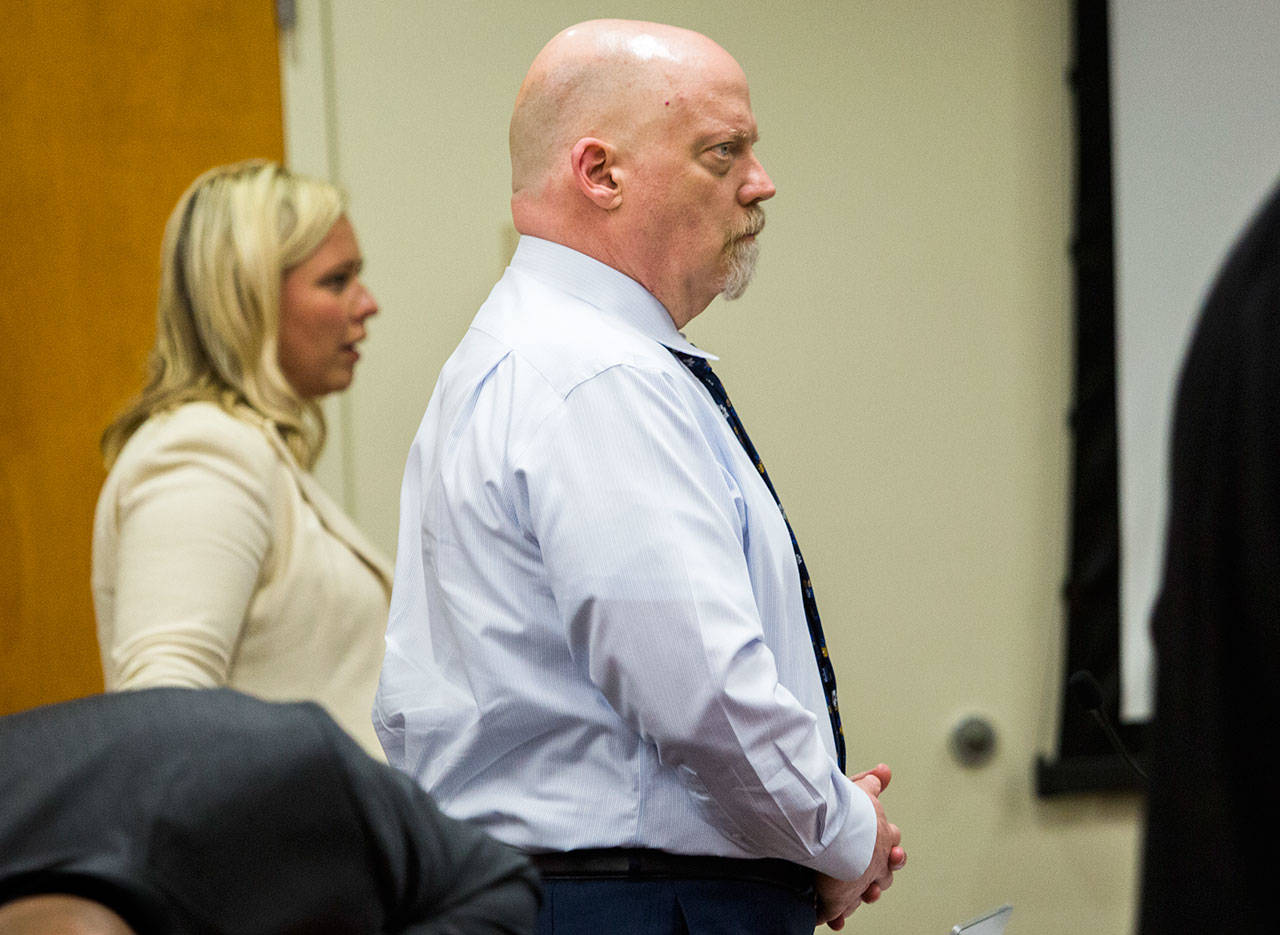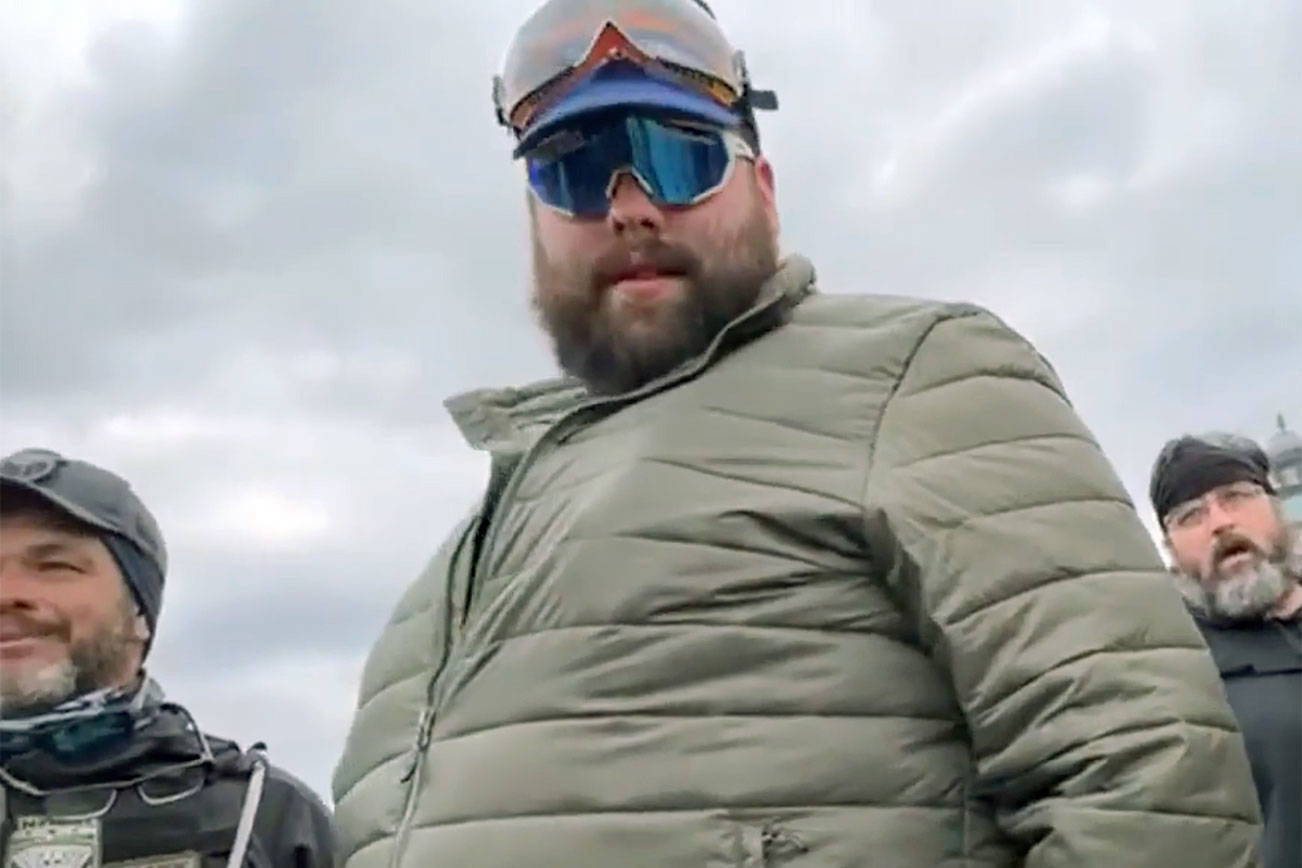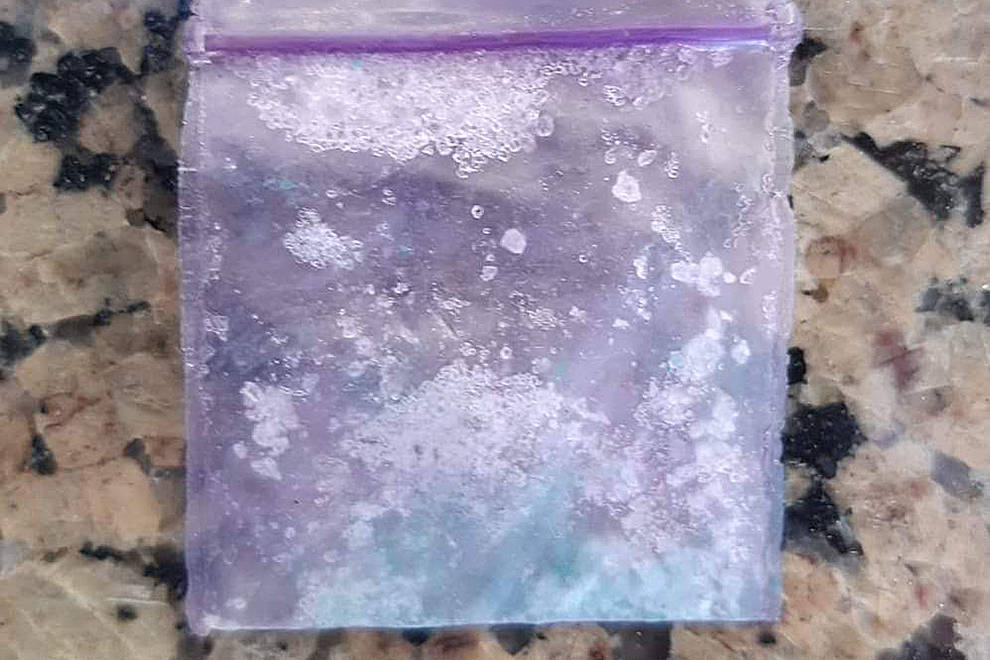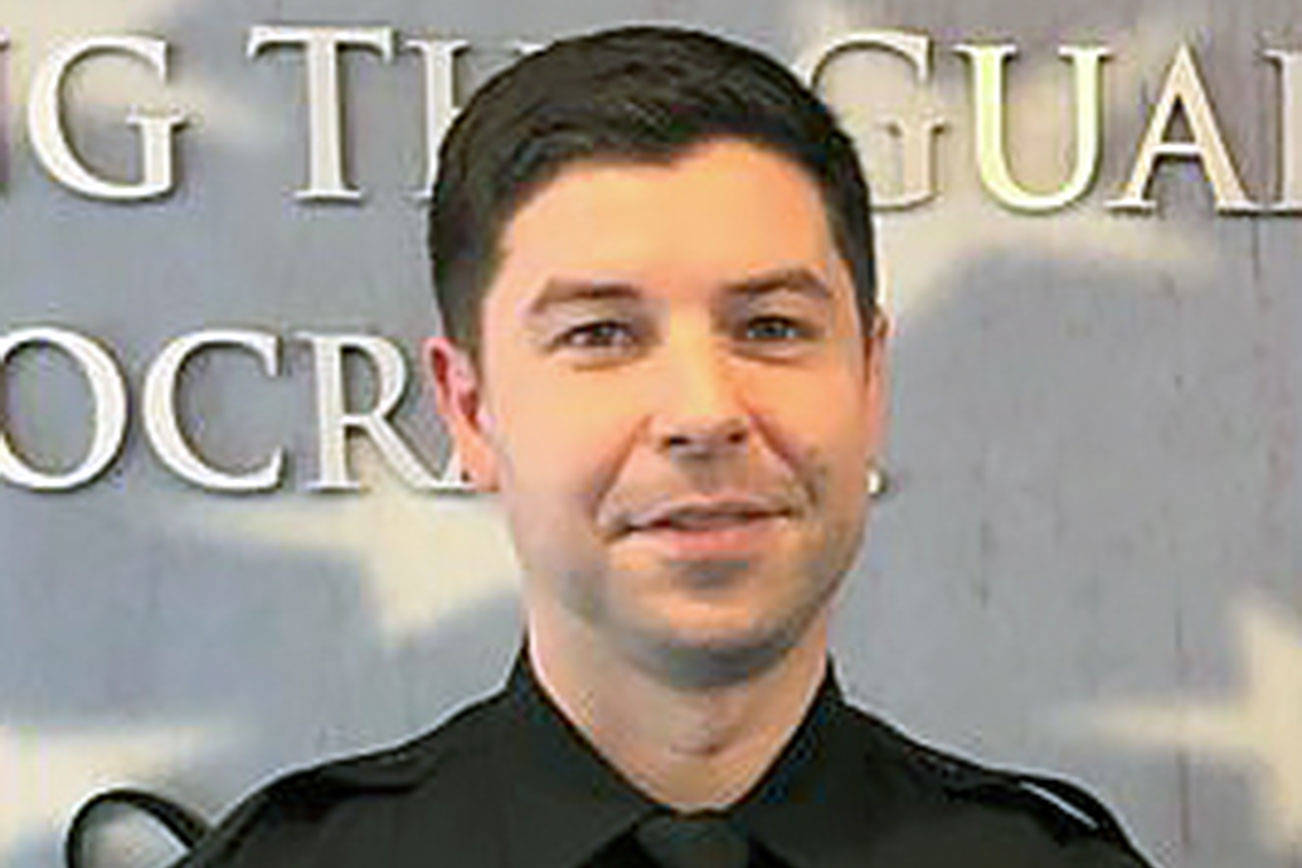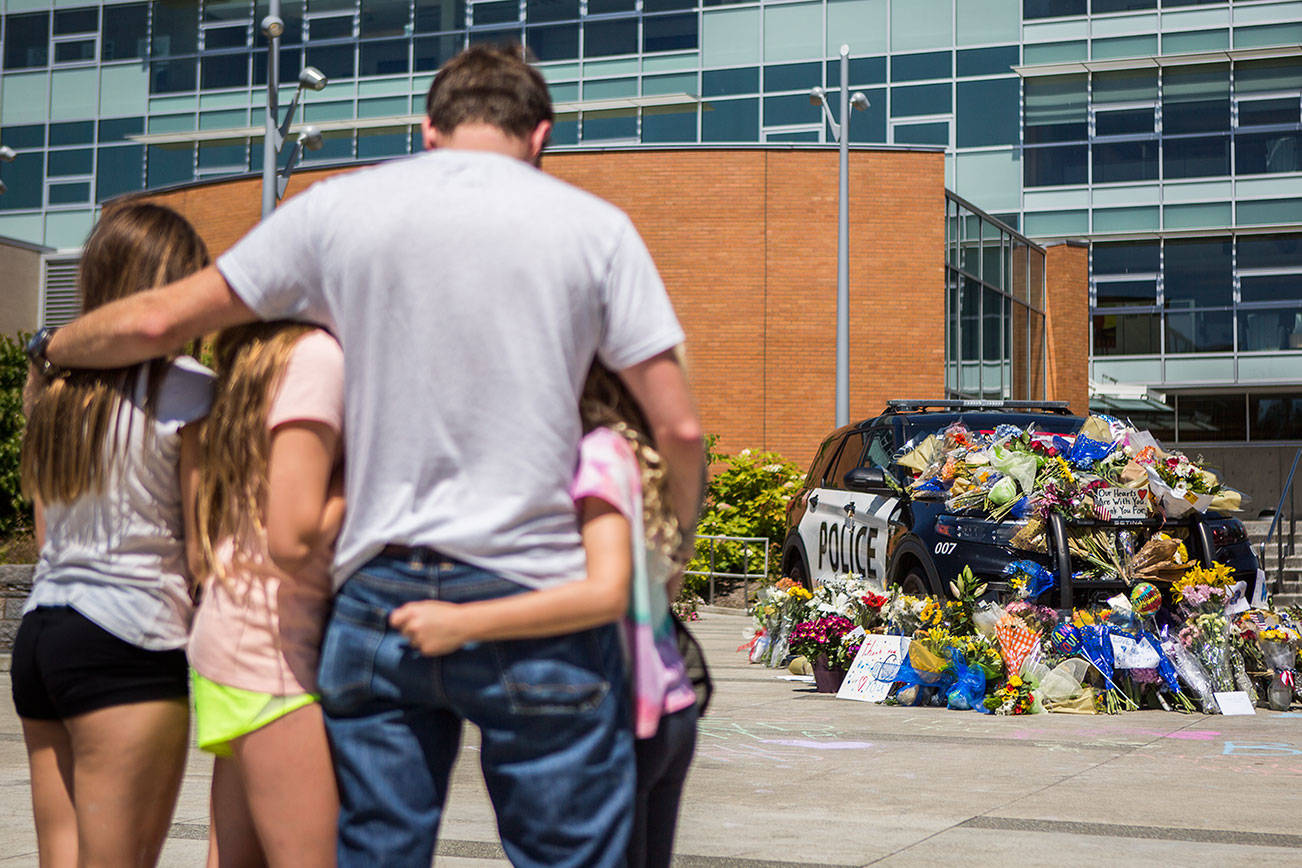EVERETT — In an early draft of her report in 2018, a fingerprint analyst had ruled out William Talbott II as a possible match for a hand print found on a bronze van.
Then the state crime lab analyst realized she’d been looking at one of the samples upside down. It is now her opinion that the print belonged to the suspect. Talbott is accused of killing a young couple traveling in the van in 1987.
In a double murder trial where cutting-edge technology involving DNA has made national headlines, it was the “so-called science” of palm print analysis that drew a lengthy, vigorous challenge from the defense Tuesday in Snohomish County Superior Court.
The Ford Club Wagon — and evidence found in and on it — has been central to the investigation from its outset.
For close to an hour Tuesday, public defender Rachel Forde grilled a forensic scientist from the Washington State Patrol crime lab, Angela Hilliard, about her level of expertise and why she changed her opinion, when a more senior peer told her to go back and check her work.
“Unfortunately it’s because I’m human,” Hilliard said. “Sometimes you just don’t see things at the time you’re evaluating and looking, and you can search and search and search, and sometimes you just don’t find it. … My original opinion was wrong, and the new information and data showed that the information was indeed there.”
As the trial entered its second week, a jury had been shown evidence gathered from crime scenes scattered across three counties north of Seattle. Retired deputies recounted the discovery of Tanya Van Cuylenborg’s body in north Skagit County.
A passerby saw the remains Nov. 24, 1987, off Parson Creek Road, a quiet paved back route bordered with deciduous trees east of Highway 99.
The Canadian woman, 18, was against a rusty culvert, nude from the waist down except for a pair of socks. She’d been shot in the back of the head.
A day later, a man working an odd-job in downtown Bellingham found her wallet and ID, while cleaning a muddy gravel lot outside Essie’s, a small tavern that has since closed its doors.
Around the corner a police officer found a Ford Club Wagon with British Columbia license plates.
It was a van that belonged to the family of Van Cuylenborg’s boyfriend Jay Cook, 20. The pair grew up in and around Victoria, British Columbia.
On Tuesday, the jury saw photos taken inside the van. Porcelain cups. Empty chip bags. A receipt for $7 in food and supplies from Hood Canal Grocery. A Royal Bank of Canada check for over $750 made out to Gensco, an appliance business in Seattle. A ticket for the Bremerton-Seattle ferry, stamped 10:16 p.m. Nov. 18, 1987.
Cook and Van Cuylenborg were supposed to pick up furnace parts the next morning, in south Seattle.
They never completed the order.
Clues were scarce as to their whereabouts from Nov. 19 to 24. Inside the van was a map of Oregon and Washington. A pair of jeans. A pair of panties. A bloodstain on a car seat. A bloodstain on a comforter. Zip ties looped into a lasso.
Cook was found dead south of Monroe, beaten with rocks. He’d been strangled with twine that was tied onto dog collars.
At each of the crime scenes — in Bellingham, rural Skagit County and rural Snohomish County — detectives seized zip ties as evidence.
A pair of black pants had been wedged between foam sleeping pads in the van. On the hem of the pants was DNA evidence, in the form of semen, that would later link Talbott to the murders 30 years later.
In May 2018, a forensic lab uploaded the DNA profile onto the public ancestry site, GEDMatch. Genealogist CeCe Moore built a suspect’s family tree, and traced it to the one son of a married couple near Woodinville.
A state crime lab later confirmed, through two other tests, that Talbott’s genetic profile matched crime scene DNA, according to prosecutors. This is the first case involving the new forensic technique, known as genetic genealogy, that has gone to a trial by jury.
On Tuesday afternoon, however, the defense focused on the fingerprint analyst’s homework.
The analyst had examples of prints from Van Cuylenborg, Cook and Talbott, and she knew which was the suspect. The analysis calls for placing colored markers on two samples, to compare.
“So what you do then after you do your analysis is a visual comparison, right?” Forde asked Hilliard. “So it’s just your eyes looking at one thing and seeing if it looks like another thing, right? Kind of like what they teach you on Sesame Street, is that right?”
Forde asked the witness if she was familiar with the case of the Madrid bomber — where the FBI jailed an Oregon man, who was later proven to be innocent — and how it raised serious questions about the validity of fingerprint analysis.
In an opening statement, prosecutors had warned the jury not all of their questions would be answered.
Talbott, 56, a truck driver living in SeaTac, never wed or had children. He has maintained his innocence.
Family and friends of the Canadian couple have been watching the trial since witness testimony began Friday.
Caleb Hutton: 425-339-3454; chutton@heraldnet.com. Twitter: @snocaleb.
